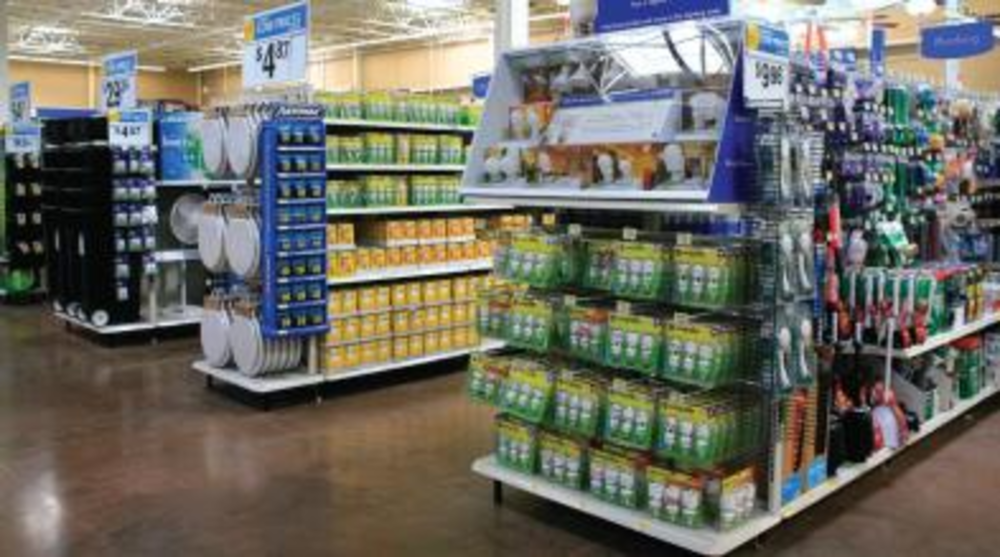In recognition of how important environmental issues have become to consumers, Wal-Mart has turned Earth Day into a month-long marketing event reaching across TV, radio, print, online and in stores.
Wal-Mart Stores Inc. is using the Earth Month campaign, its largest sustainability campaign to date, to interact with customers “through advertising, in-store displays and featured products to reinforce Wal-Mart’s goal of making sustainable products available to them at prices they can afford,” according to Tara Raddohl, senior communications manager at Wal-Mart, when reached by e-mail. “The environment will be top of mind for Wal-Mart customers” at this time of the year, she added.
This integrated approach is reflective of how Wal-Mart “is trying to be much more than a TV advertiser,” said Joe Alexander, SVP and creative director at the discount chain’s agency of record The Martin Agency. “It is much more important for a marketer of Wal-Mart’s size to not just do TV.”
With a little bit of coordination, a message can be made to resonate across a variety of media, he added.
The Martin Agency will take a similar integrated approach with all of its seasonal initiatives for Wal-Mart this year, including summer, back-to-school and holiday.
For the Earth Month campaign, a series of seven 30-second TV spots focusing on different areas of sustainability will run throughout April.
Another central element of the campaign is a 16-page magalog that was inserted into the May issues of several consumer magazines, and which will also be handed out in Wal-Mart stores. More than 20 million magalogs will be circulated, Alexander said.
The magalog is titled “A budget-friendly guide to helping the planet.” Inside is a mix of information about the environmentally friendly products found on Wal-Mart shelves and its Web site, as well as information about the small steps the consumers can take to make an impact on the environment.
Throughout, the focus is on the affordability of being green when consumers shop at Wal-Mart, and the power that Wal-Mart’s 200 million shoppers could have if they all took small steps such as buying compact fluorescent light bulbs. “You x 200 million = A brighter future” is one tagline.
The Martin Agency also created a microsite which has several different URLs: www.walmart.com/earth, www.walmart.com/green and www.walmart.com/sustainability. The content is similar to the magalog, although a wider selection of products is featured and the supporting information goes much deeper, Alexander said. Driving consumers to the URLs will be the main call to action in the TV, radio and online banner ads, he continued.
A product initiative will see more than 50 green products on Wal-Mart store shelves in April and more than 500 online. The selection spans a wide range of categories and includes several new items, such as Coca-Cola branded T-shirts made of RPET, a material manufactured from recycled plastic bottles.
“Wal-Mart’s business opportunity is to bring sustainability to the people,” Alexander said.
He added that while sustainability has been a big issue in many bigger American cities, it hasn’t taken on the same importance in smaller communities and rural areas. With this campaign, “Wal-Mart is bringing sustainability to a place where it hasn’t had a big impact,” he said.
The Earth Month campaign is just the latest in a series of steps by Wal-Mart to bolster its sustainability program. The merchant has been testing more environmentally friendly stores in several locations over the past few years. It also has a growing selection of private label products in this area, including compact fluorescent light bulbs under the Great Value brand label and coffee under the Sam’s Choice brand that has been sourced and roasted with sustainability in mind.
This month, Wal-Mart shoppers will also find signs sharing information about the environmental benefits and impact of sustainable products. This in-store signage will highlight small, affordable changes consumers can make on the environmental front.
While Wal-Mart is trying to engender goodwill with consumers, it has some work to do when it comes presenting a clear message about the savings it offers to consumers, according to The National Advertising Division (NAD) of the Council of Better Business Bureaus.
The NAD recently found fault with claims in some Wal-Mart TV advertising and a flyer that consumers can save $2,500 annually by shopping there.
Wal-Mart supported the claims with research conducted by an independent firm indicating increased marketplace competitiveness and supply chain efficiencies brought about by Wal-Mart lowered prices for consumers generally, whether they shopped at Wal-Mart or not. The NAD recommended that Wal-Mart discontinue or modify its advertising claim because it could be misleading to consumers. Wal-Mart, in a statement, said it “would be proud” to take NAD’s recommendation into account in future advertising, “ensuring that the positive impact we have for all American families is even more explicit.”








